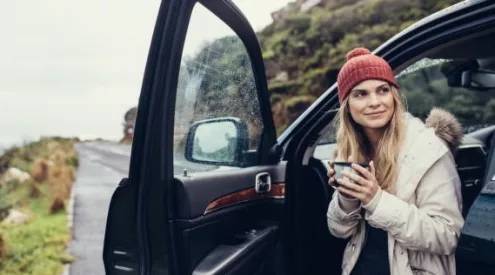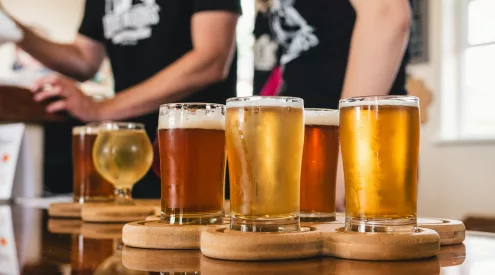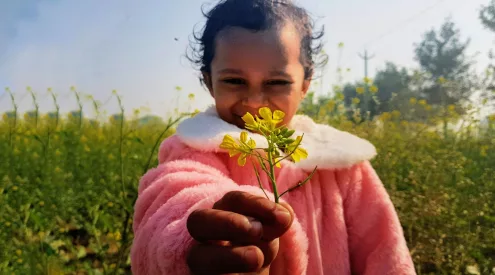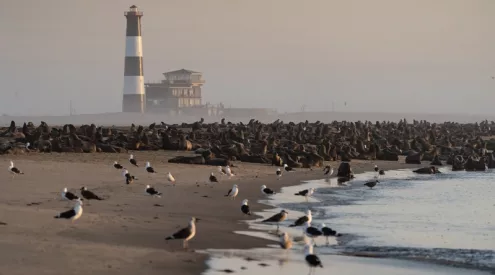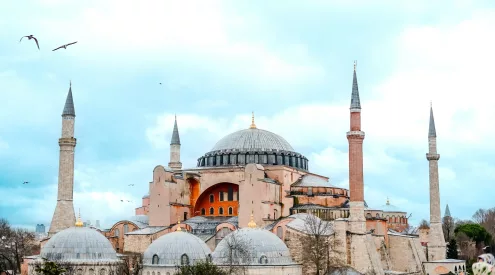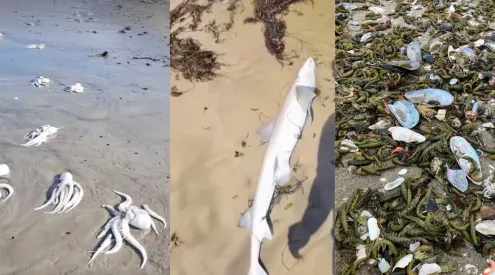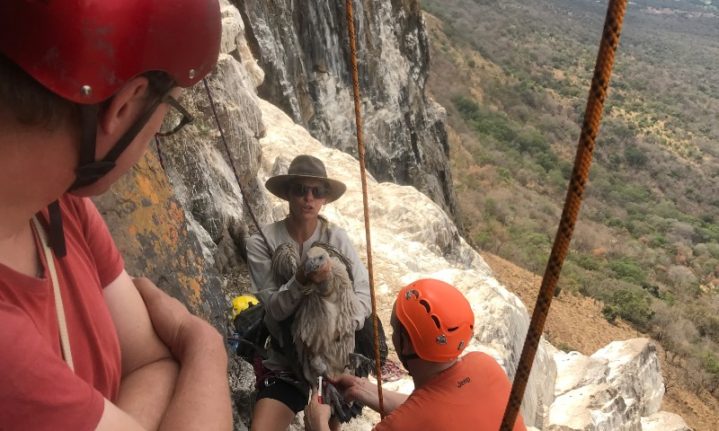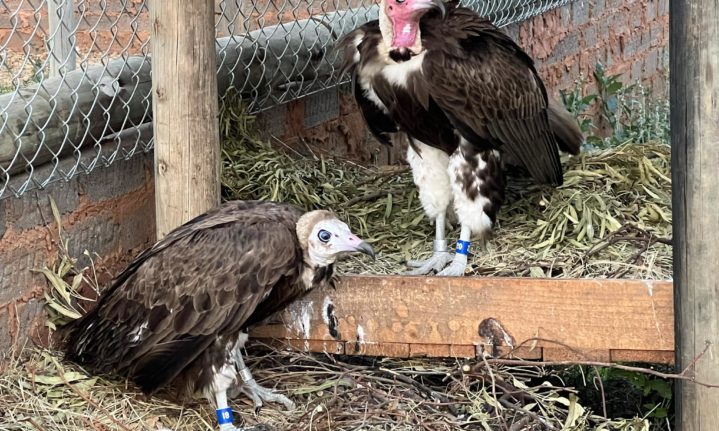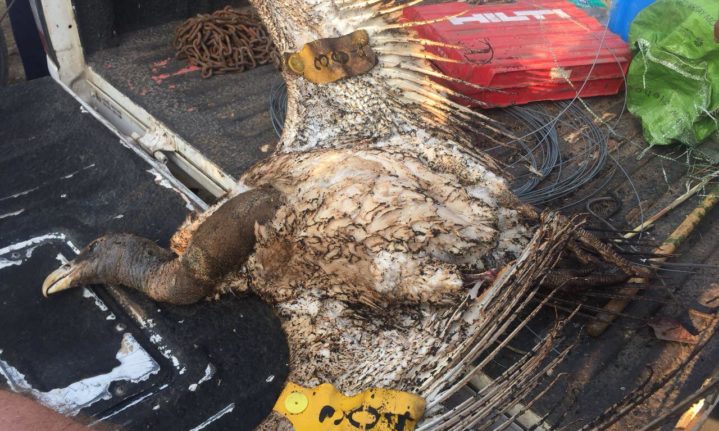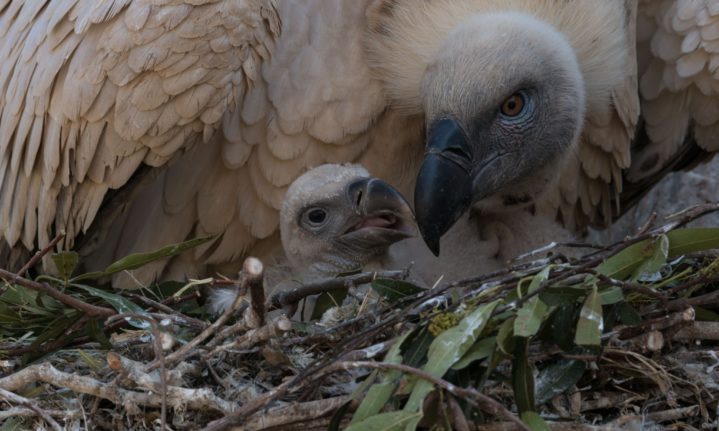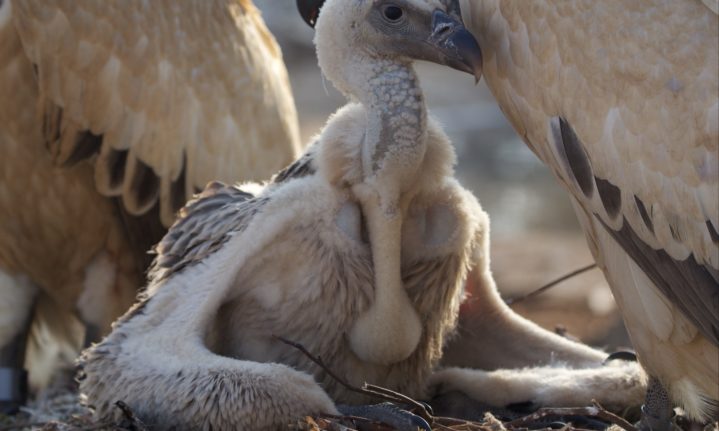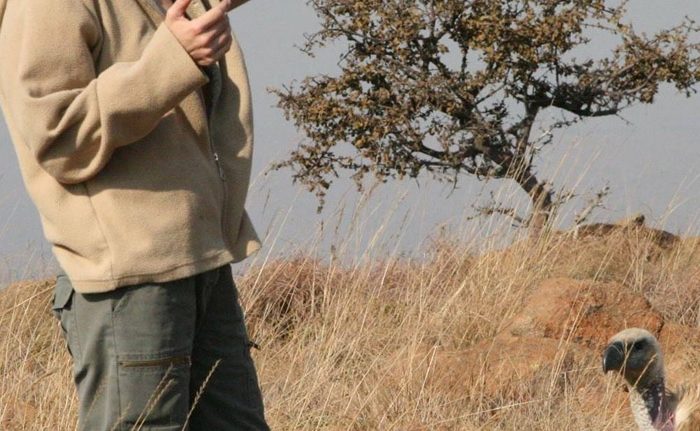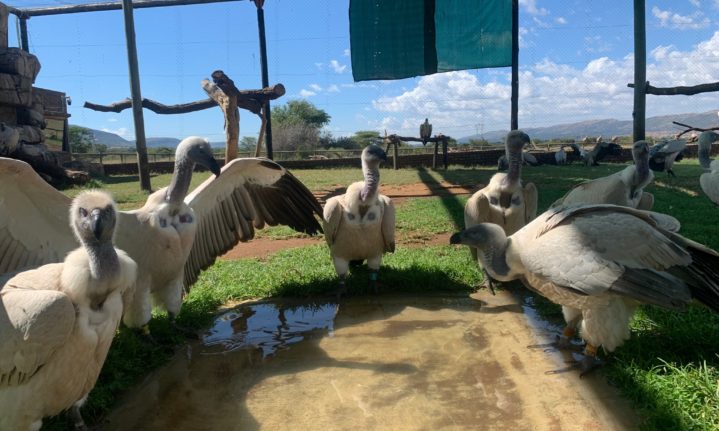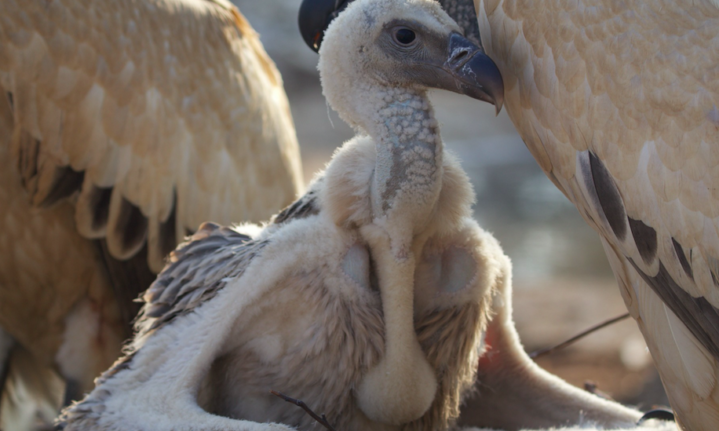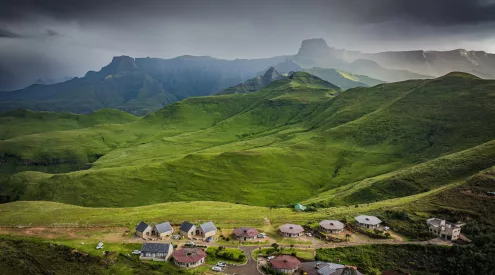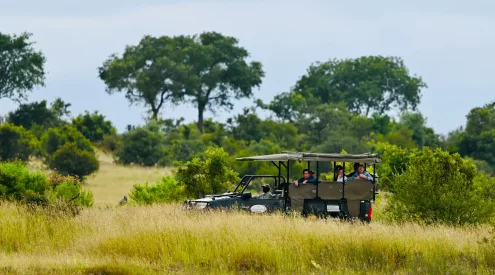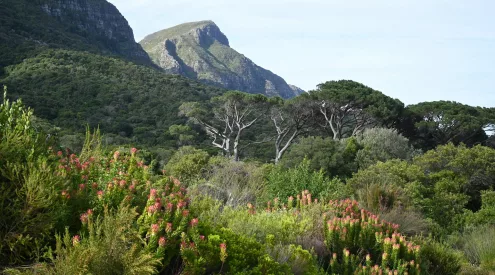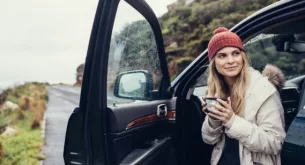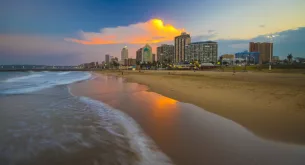Once widespread throughout Africa, vulture numbers have now plummeted with several populations declining by a staggering 95% over the last few decades. It’s a sad reality that vultures all over southern Africa are being killed, maimed or poisoned daily.
But on the outskirts of Hartbeespoort Dam in the North West province, there is a lifeline. VulPro (Vulture Programme for the Conservation of Vulture Species in southern Africa) is a rehabilitation and breeding centre that rescues countless vultures in the hopes of saving the population from extinction.
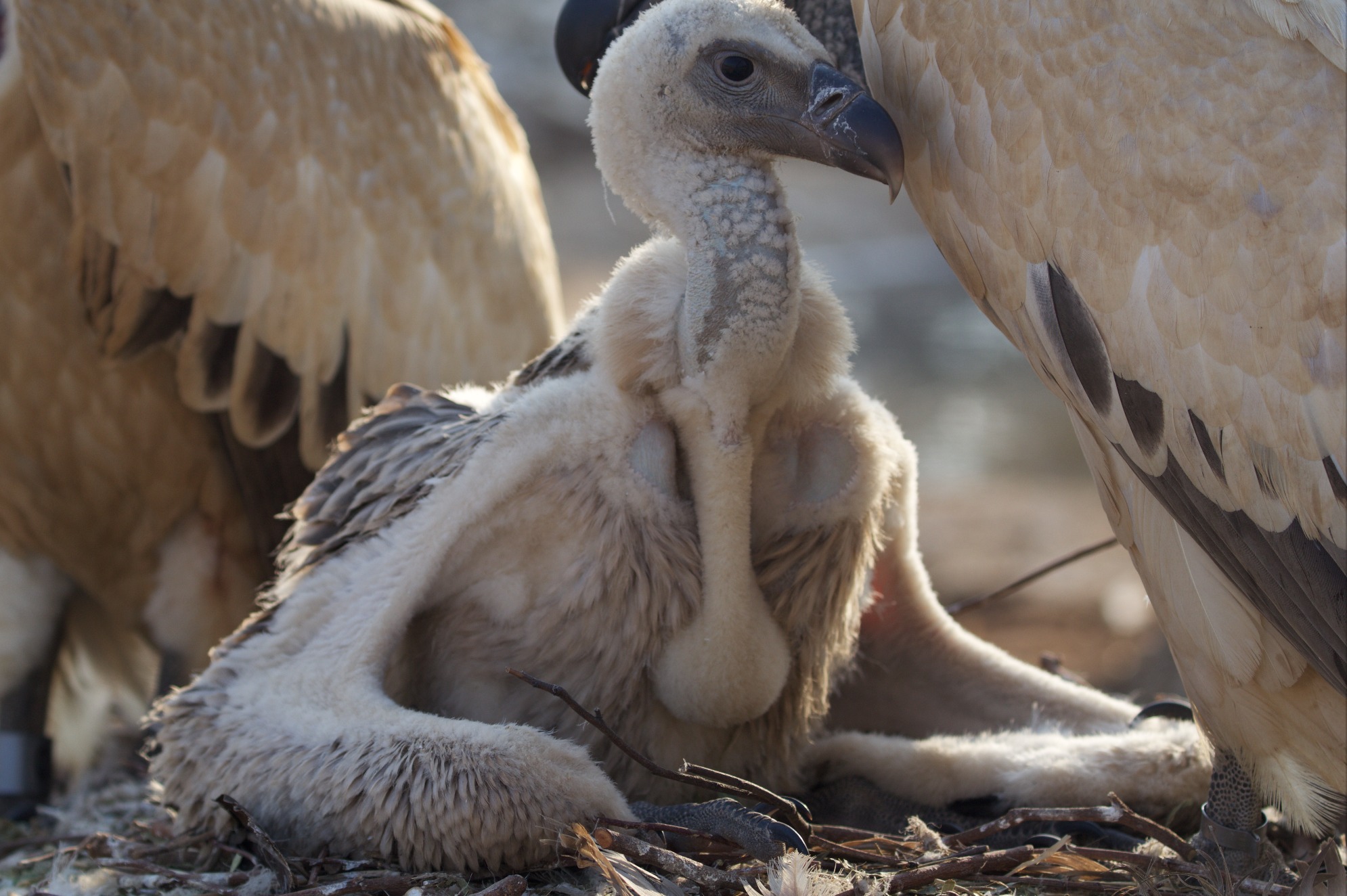
With a fully grown wing span of 2.65 metres, Cape vulture chicks can often be seen resting their exceptionally large wings on the ground.
We chatted with founder and chief executive Kerri Wolter, also known as “the vulture whisperer”.
‘I found myself looking down at a bundle of feathers and an ET-look-a-like bird that resembled a creature from the prehistoric age of dinosaurs. My heart melted,’ says Kerri as she recounts one of her very first encounters with a vulture. She had worked for the Endangered Wildlife Trust (EWT) before she launched Vulpro.
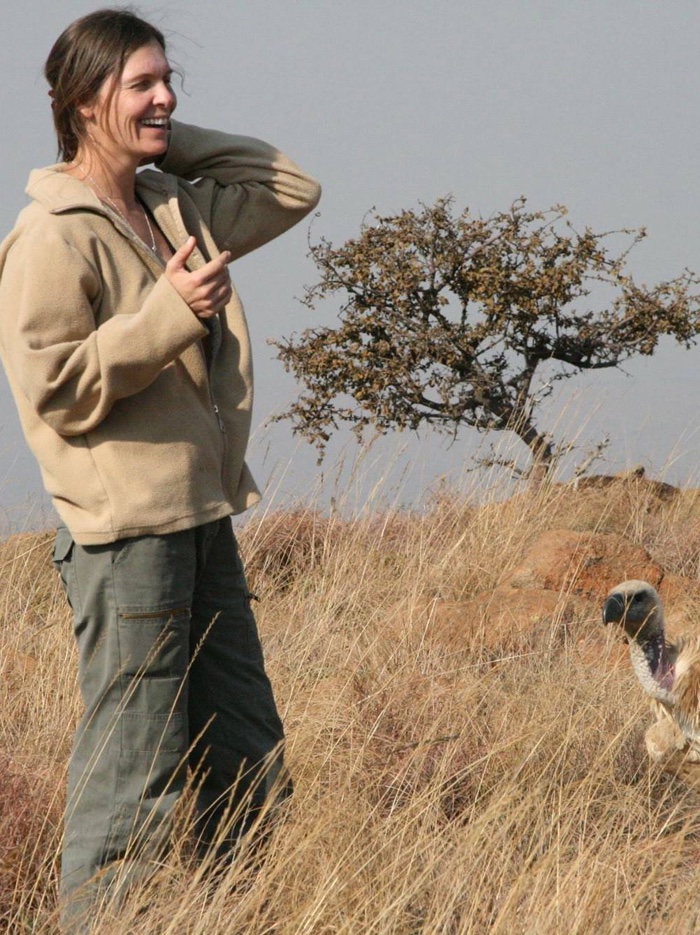
Kerri Wolter
‘I finally understood the magnificence and fragility of the species. My task, at that exact moment, was as clear as daylight to me. This was my calling: I needed to make people understand the beauty of these birds, and of their importance in our world dominated by greed and destruction.’
The many threats to vultures
Vultures are unlucky enough to face a plethora of threats, all of which contribute to their dwindling numbers.
‘There are several reasons for the cataclysmic decline, with vultures facing multiple, mostly anthropogenic, threats that vary according to species and habitats or regions,’ Kerri says.
One of the biggest threats to vultures in South Africa is collisions with electricity powerlines – both as a result of the physical impact of a collision and through electrocution – and with wind turbines and even electric fences.
‘Powerlines have always had a detrimental effect on South Africa’s birds, particularly raptors and most often vultures,’ Kerri says. ‘Because these birds fly huge distances, they often use powerline support structures as temporary roosts that offer safe, elevated vantage points to perch on. But old powerline structures, in particular, are not “bird-friendly” and pose major risks to large birds.’
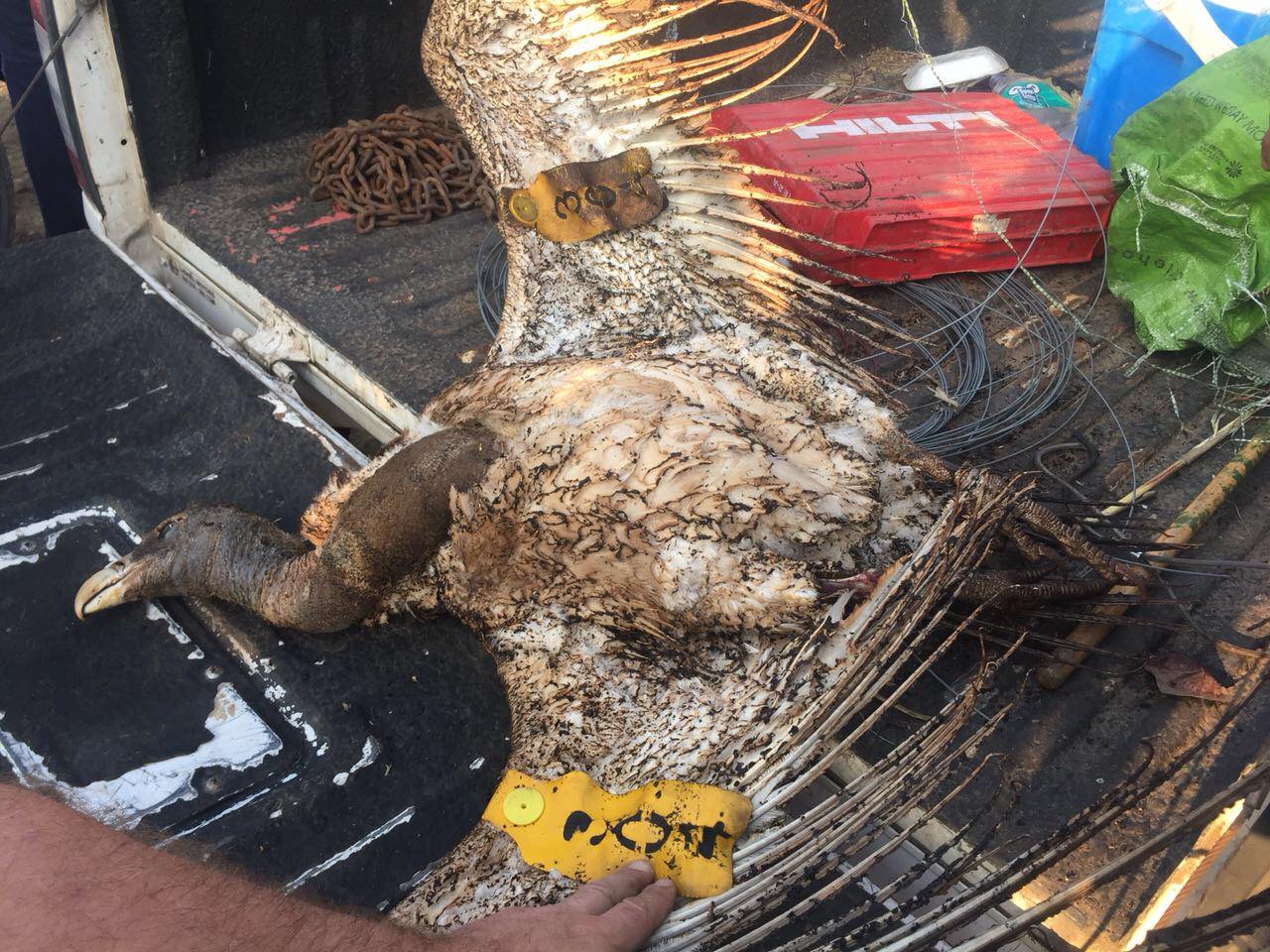
A vulture that got electrocuted by a power line.
‘Unfortunately, electrocutions are nearly always fatal, while powerline-related injuries mostly render individual birds maimed for life, with no chance of being released back into the wild because of the severity of their injuries such as broken wings and legs,’ Kerri continues. ‘But various initiatives to reduce these risks to the birds, including marking powerlines with “bird-flight diverters” that increase the visibility of the wires and reduce the risk of collisions, have been introduced in places with some success.’
Another major issue is the deliberate poisoning of vultures is the biggest current conservation challenge. ‘This sinister and cynical practice is used by poachers who want to eliminate the birds so that their illegal activities – like rhino and elephant poaching – will not be betrayed to anti-poaching units by the presence of the all-seeing “eyes in the sky”: vultures wheeling overhead the poached carcasses,’ she continues.
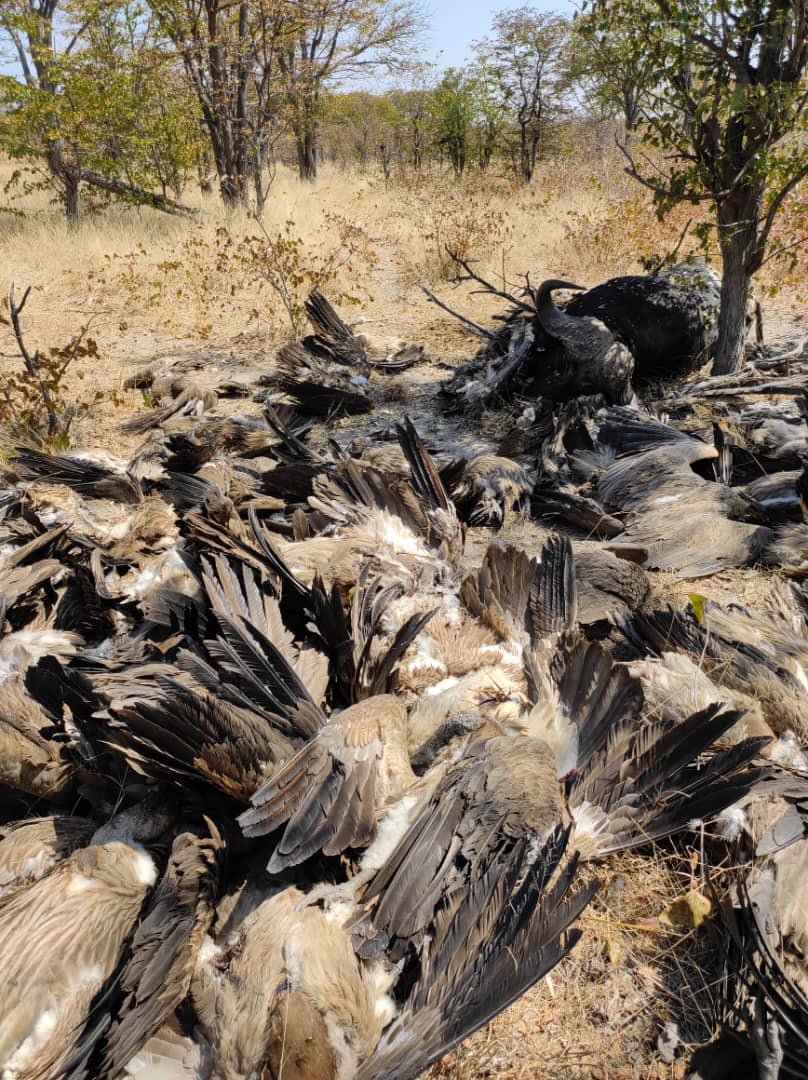
Mass poisonings for muthi are common throughout Africa.
Between just July 2011 and 2014, at least 10 such poisoning incidents were recorded, resulting in the deaths of at least 1 500 vultures across southern Africa.
One of the worst in recent years occurred in 2019 when conservationists discovered the remains of 537 vultures – this included white-backed vultures, white-headed vultures, hooded vultures, lappet-faced vultures and Cape vultures – and two tawny eagles in northern Botswana. The birds apparently died after feeding on the carcasses of three elephants poisoned by ivory poachers.
An equally disastrous mass killing occurred in Namibia’s Caprivi Strip a few years earlier, in 2013, when some 500 birds, many of them vultures, were found dead after feeding on a poisoned elephant carcass. The previous year, also in Caprivi, some 300 vultures had died in a similar incident.
And poachers who dole out poison show no signs of slowing down. According to the African Wildlife Poison Database, at least 16 130 vultures were poisoned in Africa between 1961 and November 2019, of which 2 231 were in South Africa.
‘Another major cause of vulture mortality is the use of vulture body parts in traditional African medicine, some of which are based on a belief in the so-called “supernatural powers” of these birds,’ says. Kerri. ‘In particular, the birds’ super-keen eyesight that allows them to detect carcasses from as far as four kilometres, has given rise to a belief that they can “see into the future”, and that using their body parts as muthi (medicine) endows the user with psychic powers of clairvoyance.’
‘Such superstitious beliefs have created a demand for, particularly, vulture heads (brains, beaks and eyes), while other reported uses of body parts to include bones in circumcision ceremonies; talons for the treatment of fever; and feathers for decoration.’
BirdLife International reported the findings of a scientific paper by researchers who had determined that 29% of all vulture deaths recorded continent-wide could be attributed to this muthi trade.
Other insidious threats to vulture populations include habitat loss through land-use changes – for example, transforming natural areas into farmland or human settlements – and human disturbance through a variety of developments and behaviours that result in continuously shrinking foraging ranges and a decrease in food sources.
Breeding to replenish the population
Vulpro, located in Rietfontein, is the largest centre of its kind in Africa and has been designed with large purpose-built enclosures that house more than 273 non-releasable vultures. Birds are housed here in large groups with the opportunity to interact and behave as naturally as possible, giving them an almost normal life, despite their disabilities.
And at the heart of normal behaviour is, of course, breeding.

Population supplementation is recognised as an increasingly important conservation tool to prevent vulture extinctions, Kerri explains. This allows non-releasable vultures to contribute positively to saving their wild counterparts by producing viable offspring that are released into the wild to reinforce dwindling natural populations So far, more than 80 captive-bred vultures from non-releasable parents have been released into the wild.
The centre now boasts world-class incubation facilities with a capacity of up to 50 eggs a year.
Vulpro’s story
After two years of managing the Vulture Study Group at the EWT and finding herself confronting the continuing catastrophic decline of vultures, Kerri decided that she could best use her energy and passion in a dedicated organisation focused entirely on saving these birds.
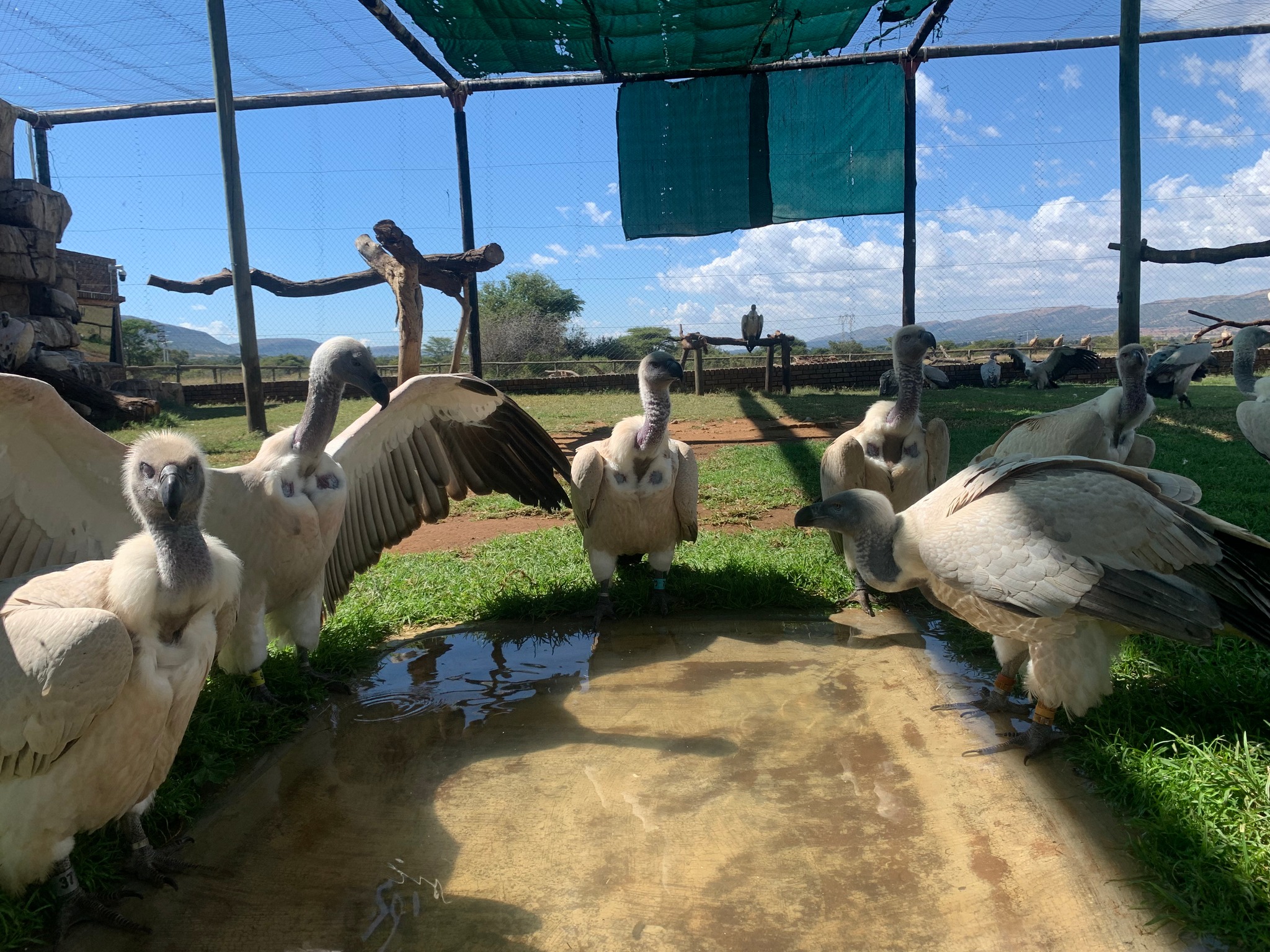
One of the enclosures at Vulpro.
And so, Vulpro was duly hatched on New Year’s Day in 2007.
The organisation’s initial emphasis was on the Cape vulture, but in subsequent years its focus broadened so that it now includes all African vulture species and encompasses both in situ and ex situ conservation strategies. Its mandate as an organisation is to rescue, rehabilitate, release, research, preserve and conserve vultures, and it has become world-renowned for its ground-breaking conservation work.
After living and working with vultures for close to 20 years and being able to observe the species at close range, Kerri has acquired invaluable insights into the birds’ everyday lives. And many unforgettable experiences – including flying alongside them in a tandem paraglider – have continually reinforced her passion and commitment to help safeguard their future, she says.
‘To have joined them in the air and to have watched their magnificence while flying so close to them has been one of the most life-changing events I’ve ever experienced.’
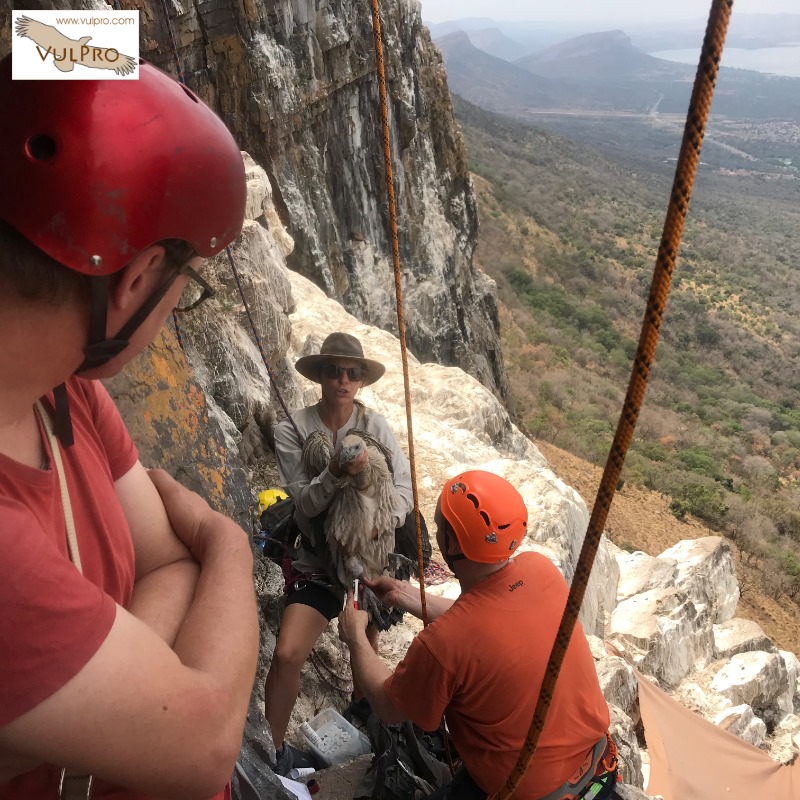
The Vulpro team on a mission to ring Cape vulture nestlings from the Magaliesberg Mountain colonies for tracking and research.
‘Other defining moments for me have been sitting on breeding ledges observing while parents feed their chicks, when I felt I became one of them for a few hours. Vultures are some of the most tender, loving parents one can imagine. Despite their enormous size, large and powerful beaks, and chicken-like dinosaur feet, they are meticulous in caring for their young.
‘They move around their perfectly assembled nests with great care so as to avoid standing on their eggs or injuring their chicks – no small feat considering the limited space on a breeding ledge or nesting tree! Both parents share in the entire breeding process from nest building, through incubation, to raising the chick. They are devoted parents and are committed to protecting and nurturing their young until it fledges and leaves the nest. ‘
Vulpro is a non-profit organisation. If you’re interested in contributing to their work, see how you can do so here: www.vulpro.com/how-can-you-help/.
Here’s what to do if you have found a vulture in need of help.
To get in touch, phone +27 82 808 5113 or email [email protected]. You can also follow them on Facebook.
Pictures: Supplied
ALSO READ: 4 amazing spots for sleeping under the stars in South Luangwa

